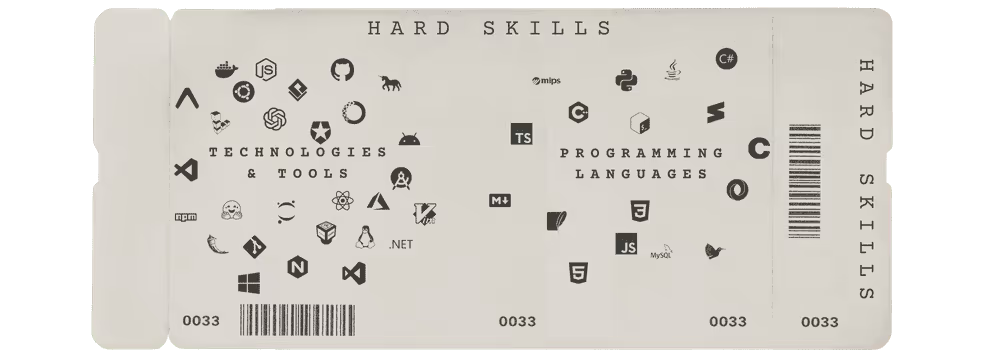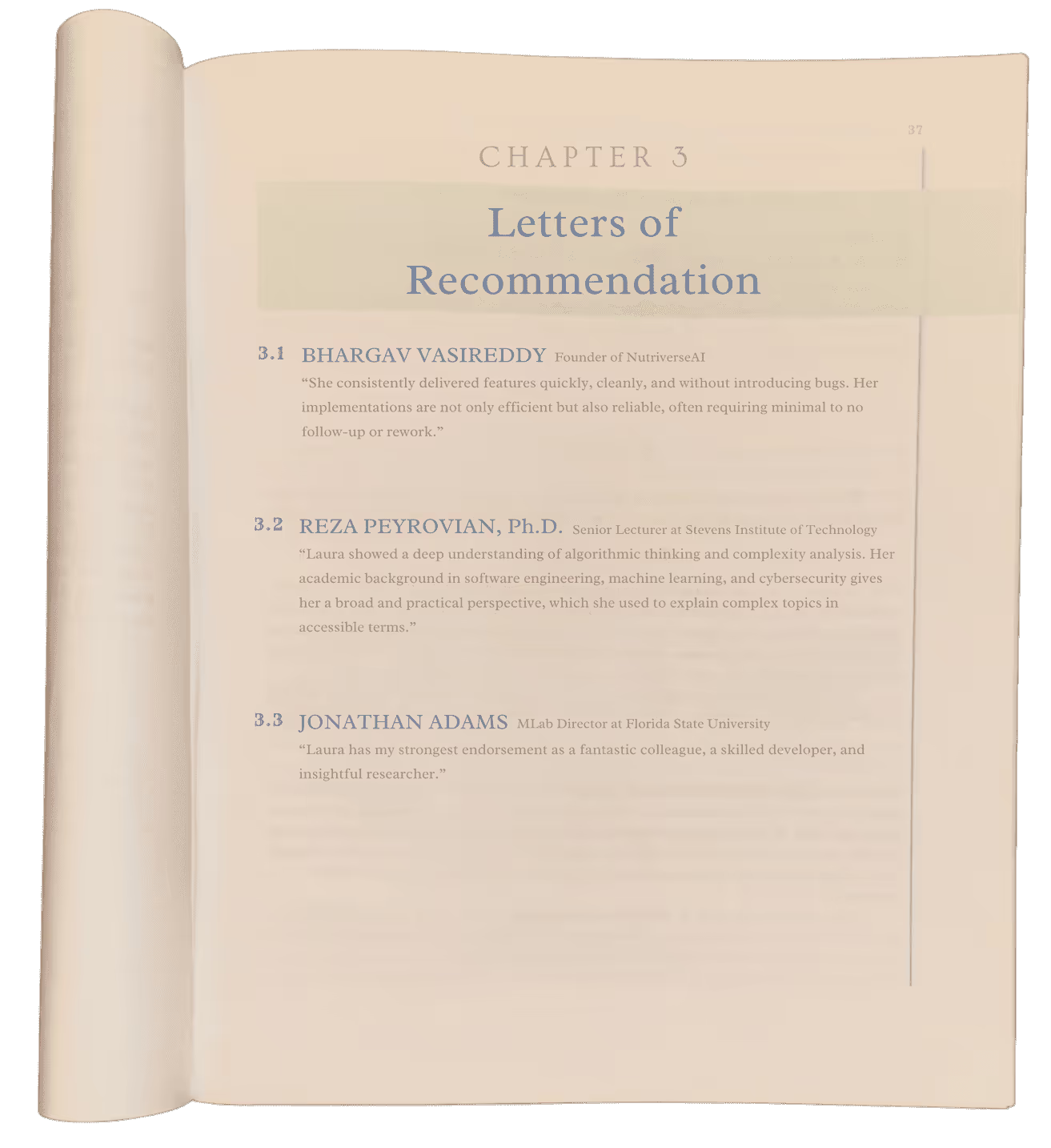
Text-only version available.
Text-only / Markdown version · Plain-text
 Are you a bot? Get Markdown
Are you a bot? Get Markdown




















| EXPERIENCE | |||
|---|---|---|---|
| Company | Date | Role | |
| AI Blockchain | SU25 | Software Architect | |
| NutriverseAI | SU25 | Software Engineer | |
| SIT | SP25 | Course Assistant | |
| FSU | FA22-SP23 | Research Assistant | |
| EDUCATION | |||
|---|---|---|---|
| University | Date | Degree | |
| SIT | SP24-FA25 | MS in Software Engineering | |
| SIT | SP24-FA25 | Grad Cert in Machine Learning | |
| SIT | SP24-FA25 | Grad Cert in Cyber Security | |
| FSU | FA21-23 | BS in Computer Science | |
| PROJECTS | |||
|---|---|---|---|
| Repository | Date | Type | |
| NutriverseAI | May-Aug 25 | App Dev/ML | |
| WakaTime Readme Stats | Jun-Jul 25 | Dev Tools | |
| AGI Epigenetic Reprogramming | Jul-Cur 25 | App Dev/ML | |
| Body Metrics | Jul 25 | App Dev | |
| Humidor Temp App | Jun 25 | App Dev | |
| PP Email Integration | May-Jun 25 | App Dev | |
| Nutrition Analyzer | Mar-May 25 | ML | |
| Combined Models | Jul-Aug 2024 | ML | |
| ProFessUp | Sep-Dec 23 | App Dev | |
| Fat32 Filesystem | Nov-Dec 23 | Op Sys | |
| Hacker News | Oct-Dec 23 | App Dev | |
| Elevator Kernel Module | Oct-Nov 23 | Op Sys | |
| Shell | Sep-Oct 23 | Op Sys | |
| Practice Panther | Jun-Aug 23 | App Dev | |
| My Notes App | Jul-Aug 23 | App Dev | |
| OS CONTRIBUTIONS | |||
|---|---|---|---|
| Repository | Date | Status | |
| LeetCode Stats Card | 08/07/25 | PR Open | |
| Simple Icons | 08/07/25 | Complete | |
| Awesome Github Profile README | 08/05/25 | PR Open | |